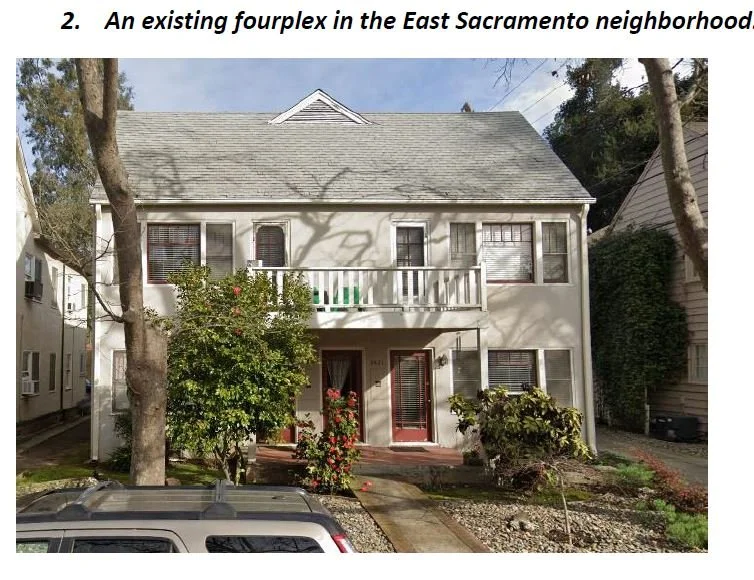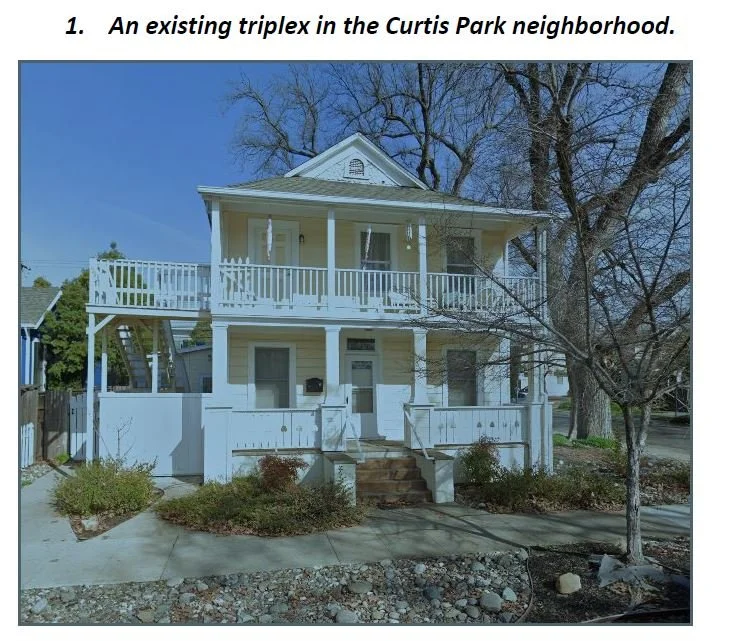SB 9 takes effect in January as Sacramento forges ahead with plan to allow more housing types
Walk through any Sacramento neighborhood developed before 1960 and you’ll see a variety of housing types catering to owners and renters of various incomes — stately craftsman and Victorian homes alongside duplexes, triplexes and fourplexes.
Neighborhoods in Sacramento and around the nation became more homogeneous starting in the mid-20th century as cities increasingly changed their zoning rules to forbid the construction of anything but single-family homes in existing neighborhoods. New subdivisions were designed as a sea of single-family homes with renters concentrated in large apartment complexes.
Faced with a dire housing shortage and persistent segregation by income and race, Sacramento and other cities are now trying to create more lower-cost housing opportunities by bringing back the “missing middle” of housing types.
“More than 70 percent of the land in the city that allows residential uses is zoned for single-family residential,” said Matt Hertel, the City’s Long Range Planning Manager. “We have very limited choice in the housing types we allow in the city, especially in residential neighborhoods, and we want to provide more opportunities for people to live in these places, near desirable amenities and jobs, schools and transit.”
The state is requiring that cities act. On Jan. 1, a new state law, SB 9, takes effect that will allow duplexes on single-family lots by right and ministerial approval of lot splits — meaning no public hearing is required and a lot split must be approved as long as the property meets certain specifications. SB 9 means a single-family lot could now be split into two lots with two units a piece — for a total of four units. The new state law does not apply to historic districts.
On Dec. 14, City planning staff expects to come to Council with an emergency ordinance to adopt the minimum changes required by SB 9 while the City presses ahead with its own ambitious process of crafting a longer-term strategy to increase housing types in single-family neighborhoods.
“Our housing shortage threatens the vitality and livability of our city,” said Mayor Darrell Steinberg, who strongly supports the plan to allow more housing types in existing neighborhoods. “We can maintain the scale and charm of our neighborhoods while allowing more people the opportunity not just to play in a neighborhood like Land Park or East Sacramento, but to live there.”
In December 2019, the City adopted rules allowing homeowners to build two accessory dwelling units on their lots. In January, the City Council unanimously directed staff to proceed with developing a strategy to allow a greater array of housing types such as duplexes, triplexes and fourplexes on single-family lots. That strategy is targeted for inclusion in the new general plan that is expected to be available for public review in early 2022 and go to the City Council in the Summer. It will likely be a year before any of those locally driven changes take effect, because the City’s zoning code must also be updated. Those changes will incorporate limits on height and lot coverage and other development and design standards – key provisions to maintaining neighborhood scale.
Over the next year, the City will use a $600,000 grant received from the Sacramento Area Council of Governments to conduct a “missing middle” housing analysis and neighborhood-level engagement that will result in recommendations about what types of housing should be allowed in residential zones, how many units should be allowed on a lot and what standards for parking and open space should apply. All of the recent and proposed rule changes will be folded into that overarching policy.
“We’ll be striking that balance to allow more housing choice throughout the city while maintaining a neighborhood feel and scale,” Hertel said.
In the interim, property owners will NOT be able to combine the City’s Accessory Dwelling Unit (ADU) allowances with the provisions of SB 9 to increase the number of allowable units beyond two on each lot. However, ADUs would continue to be allowed with existing duplexes, or new duplexes approved through the standard (non-SB 9 ministerial process) planning approval process.
Hertel stressed that there will be many opportunities for public input in the coming months. Today the City launched a new website devoted to SB 9. You can find it here. You can sign up through the website to attend webinars scheduled for the next month, one on Nov. 15 at noon and one on Nov. 17 from 6 p.m. to 7 p.m. A webinar recording will also be posted to the web page.





